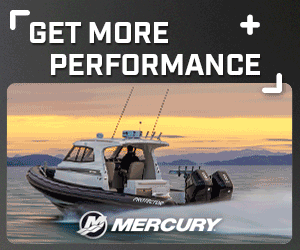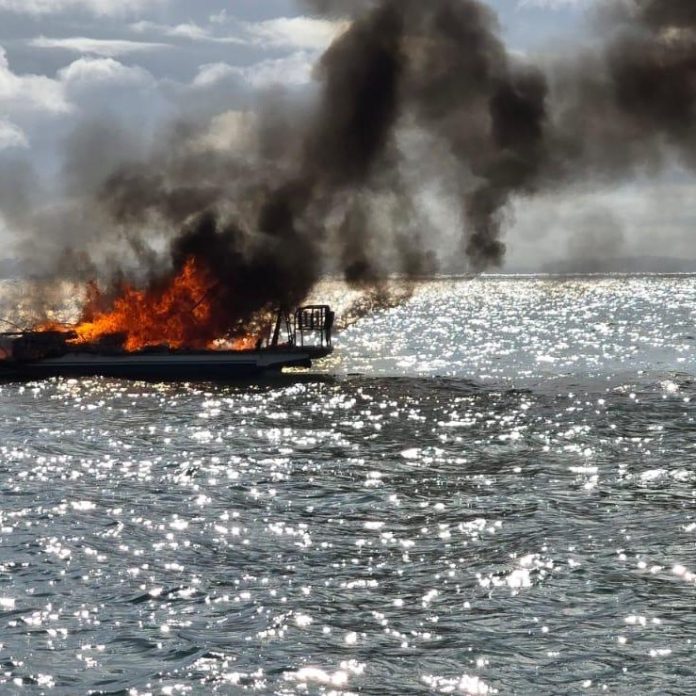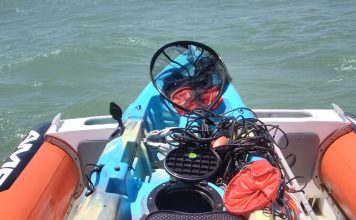Losing your rudder hundreds of miles offshore is a serious situation. Your ability to control the boat is instantly compromised, especially in heavy weather or swell. That was the reality faced recently by the crew onboard Lucky Jonny (with follow-up article.) While I’m still awaiting a first-hand account of their ordeal, it’s worth reviewing the emergency steering strategies every offshore sailor should know.
The first rule is preparation: know your emergency steering plan and have the right tools ready — before you’re in trouble. And practise switching from your main rudder to your backup system. As many crews have discovered, rough conditions leave no time to figure things out on the fly.

Here are five proven emergency steering methods used by bluewater cruisers, ordered by their reliability and suitability for extended offshore use.
1. Dedicated emergency rudder kits
Commercially available systems like the Hydrovane Emergency Rudder (E.R.) or the Monitor SOS Rudder are purpose-built solutions. These mount on the transom and function as independent rudders. Some kits can be deployed in minutes if pre-mounted or stowed smartly. Unlike improvised options, they’re designed to provide directional control under both sail and power. These are the gold standard for serious ocean cruisers preparing for full redundancy.
After losing the rudder mid-ocean, sailor Jan Kamenz used his Hydrovane emergency tiller to steer his Jeanneau Sun Odyssey 43 over 500 nautical miles to Bermuda. Battling rough seas and exhaustion, he credits the Hydrovane with saving his yacht—saying simply, “Without it, I wouldn’t have a ship today.”
Best for: Extended offshore voyages with planning room for gear.
Note: The Hydrovane is both a steering and emergency rudder system, offering dual purpose.
2. Steering with a paddle, oar, or tiller arm
Lashing a sturdy oar, paddle, or even a floorboard to the stern creates a crude rudder. You steer by pivoting it side-to-side manually. This works better in flat conditions or with crew seated at the stern. (Chris Tibbs writes in the article, Managing Emergencies – Rudder Failure tells a story of steering from inside the cabin with no visibility making the job of steering near impossible. And an interesting tidbit “The most often quoted method is to lash the toilet door, a floorboard or other piece of wood to a spinnaker pole and use this as a steering oar.”)
Some sailors have used aluminium emergency tiller arms bolted into pre-installed fittings. Australian Sailing Resources highlight that if you’re using a spinnaker pole and floorboard as an emergency rudder, the floorboard should be long, narrow, and weighted—typically with chain—to help it stay vertical in the water. To improve control, the inboard end of the pole may need mechanical assistance, such as sheets or ropes led to winches to amplify steering force.
All yachts with wheel steering come with an emergency tiller — but when was the last time you actually tested yours? Or, as reported in some cases, actually found it?
In his Yachting Monthly 2015 article Chris Beeson discusses Heya, a Swiss yacht which lost steerage in strong winds and heavy seas whilst participating in the 2001 ARC. The crew improvised a rudder by securing one end of the spinnaker pole to the bathing platform and steering using lines attached to the pole. They successfully completed the final 325 miles to St Lucia unaided. However, they had to reduce sail early or heave-to in heavier winds—indicating a larger steering blade might have provided better control.
Best for: Short-term directional control or motoring in calm seas.
3. Using a drogue or sea anchor to steer
Deploying a drogue from the stern or quarter—usually via bridle lines—can create directional drag. Trimming port or starboard changes your heading. While you lose manoeuvrability, it can hold a safe downwind course. For downwind passages, this method has saved yachts from drifting beam-on to waves.
The training video, below, showcases two proven methods for steering a vessel with a damaged or missing rudder—offering practical options for both cruisers and racers. Each drogue is deployed following manufacturer guidelines, with additional techniques from Zack Smith to refine the traditional setup. Well worth a watch.
Best for: Downwind steering in strong weather.
4. Twin warp steering (drag devices on bridle lines)
By towing two long warps (ropes) or lengths of chain behind the yacht, you can adjust their relative drag to induce course changes.
The principle is similar to using asymmetric water resistance. This method is time-tested and works surprisingly well if your sail trim is stable.
Best for: Maintaining a straight course under sail.
5. Balanced sail plan steering
Adjusting sail area and centre of effort can induce weather or lee helm. By reefing or adjusting the headsail and mainsail balance, you can steer the boat gently. On a beam reach, some boats can maintain a relatively straight course this way for extended periods—though changes in wind strength will require constant monitoring.
Best for: Sailing in moderate weather, particularly beam or broad reach.
Final thoughts
Redundancy offshore isn’t just about electronics or watermakers—it’s about core systems like steering. Whether you carry a full emergency rudder or rely on clever sail trim and drogues, you need a plan for rudder failure. Ideally, test your backup steering method during a sea trial so you understand its limits before facing a real emergency.
Previous: Lucky Jonny rescue sparks offshore sailing debate





















